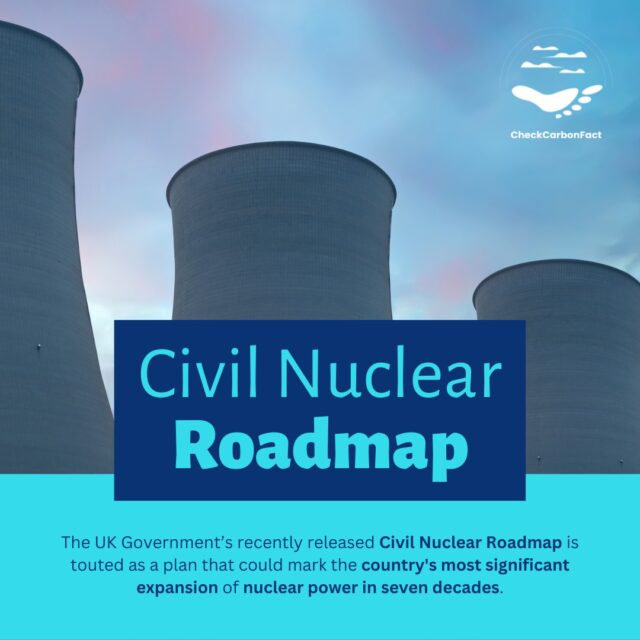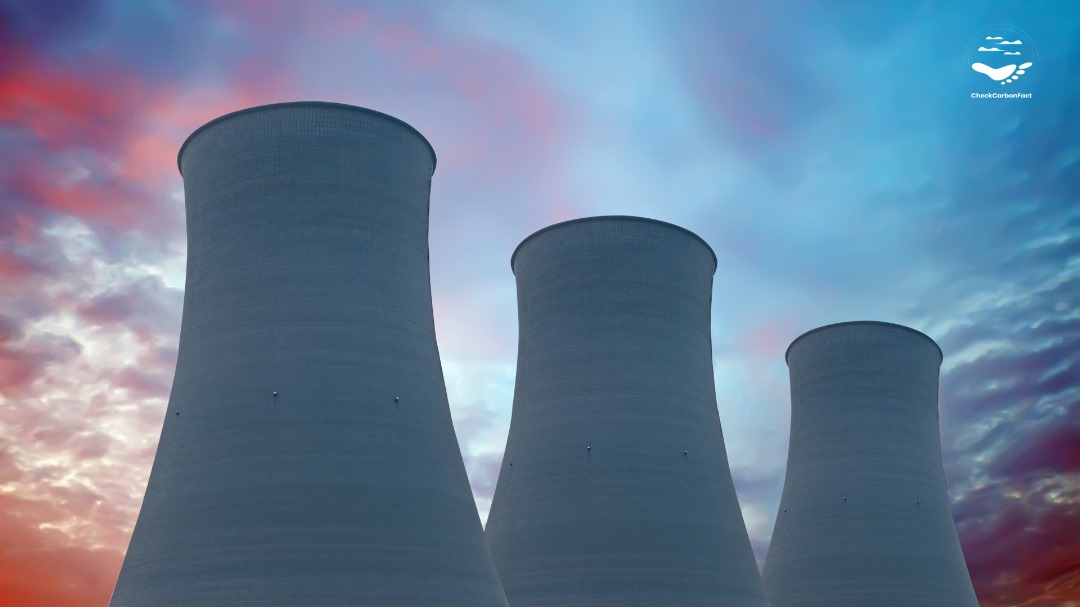In a bold move to tackle energy challenges and achieve net zero by 2050, the UK government recently unveiled plans for what it claims to be the country’s most significant nuclear power expansion in seven decades.

Source: Finnbarr Webster/Getty Images (The Guardian)
The roadmap contends that nuclear power is indispensable for achieving the country’s net-zero emissions target with its very low-carbon electricity. As the share of nuclear power in the UK’s energy generation decreases while electricity demand rises due to electrification in various sectors, the government sees nuclear energy as a crucial component of the energy mix.
The government contends that the new nuclear power plants will support thousands of jobs and reduce dependence on international energy markets, specifically mentioning the goal of diminishing Russia’s influence. Prime Minister Rishi Sunak describes nuclear power as the “perfect antidote to the energy challenges facing Britain,” highlighting the potential economic and geopolitical benefits.
However, amid scepticism and concerns over cost and delays that have plagued previous nuclear projects, the roadmap is generating mixed reactions.
In this article, we will explore the plan further to understand its intricacies.
Currently, nuclear energy contributes approximately 16% to the UK’s energy mix, but the roadmap envisions a substantial increase in this share. Ministers are framing this initiative as a crucial step in reducing the UK’s dependence on foreign energy supplies.
The roadmap aligns with former Prime Minister Boris Johnson’s 2022 pledge to “build a new [reactor] every year” as part of a transition away from fossil fuels. According to the plan, approval will be granted for one or two new reactors every five years from 2030 to 2044. Additionally, support will be extended to another large-scale reactor in addition to Hinkley Point C and the planned Sizewell C.
Nuclear Power’s Troubled History
The UK’s existing nuclear projects, notably Hinkley Point C, have faced substantial cost overruns and delays, raising concerns about the feasibility of new projects proposed in the roadmap. Initially approved at £18 billion, Hinkley Point C is now projected to cost £32.7 billion and experience significant delays, partly attributed to inflation and the COVID-19 pandemic. Sizewell C, the only other plant currently in the pipeline, is expected to begin operations in 2034, a decade later than initially planned.
Despite challenges, the government is still contemplating the construction of another large power plant and exploring the potential of small modular reactors (SMRs) from the mid-2030s.
What are Small Modular Reactors (SMRs)
SMRs represent a potential alternative path, being smaller than conventional plants and capable of factory production, which could make them more cost-effective and quicker to deploy. However, the commercial availability of SMRs remains uncertain, adding an element of risk to the government’s roadmap.

Challenges and Criticisms
However, the announcement has not been without its share of scepticism. Existing nuclear projects like those at Hinkley Point and Sizewell have faced delays, cost overruns, and local opposition. The cost of the Hinkley Point C project, spearheaded by French utility, EDF, has surged to £33bn, marking a 30% increase from initial estimates in 2015. C.
Similarly, the government’s commitment of over £1 billion to the Sizewell C project raises questions about the feasibility of such large-scale endeavours. Critics argue that a more comprehensive approach to clean energy, including renewables, should be fast-tracked, considering the challenges faced by nuclear projects.
But the recent downturn in Britain’s nuclear power output adds another layer of uncertainty. In 2023, the country witnessed its lowest nuclear power output in over four decades, primarily due to the closure of three reactors in the previous two years and statutory maintenance-related shutdowns. EDF, a key player in the industry, has delayed the shutdown of four UK nuclear reactors for at least two years to address the impending gap in nuclear supplies.
Key Components of the Roadmap
- Large-Scale Nuclear Power Plant and SMRs: The roadmap outlines plans to explore the development of both large-scale nuclear power plants and small modular reactors. This dual approach diversifies the nuclear energy portfolio and caters to different energy needs.
- Investment Decisions: The government sets an ambitious target of securing 3–7 GW worth of investment decisions every five years from 2030 to 2044 for new nuclear projects. This commitment reflects a determination to accelerate the growth of nuclear energy capacity in the UK.
- Streamlined Development and Smart Regulation: To expedite the overall process, the government proposes streamlining the development of new nuclear power plants and introducing more intelligent regulation. This includes assessing projects while designs are finalized and collaborating more effectively with overseas regulators evaluating the same technology.
- High-Assay Low-Enriched Uranium (HALEU) Production: A noteworthy aspect of the roadmap is the government’s pledge to invest up to GBP300 million in domestic production of high-assay low-enriched uranium (HALEU). This move aims to reduce dependence on foreign sources, particularly Russia, and support the advanced nuclear fuel requirements for upcoming reactor designs.
- Consultations on Siting and Sector Support: The government has initiated consultations on a new approach to siting future nuclear power plants and supporting the sector through private investment. The goal is to attract investment by empowering developers to identify suitable sites, deviating from the previous focus on government-designated locations.
Public and Private Investment
The government’s multi-million-pound investment in the nuclear industry aims to stimulate private-sector participation. However, critics argue that the industry’s history of running over budget and behind schedule raises concerns about the effectiveness of this approach in enhancing the UK’s energy security in the short term.
Others question the economic viability of nuclear power, asserting that the future lies in renewable energy. They point out that the government’s grandiose announcements may not be enough to sway investors who are increasingly favouring renewable technologies due to their economic feasibility.
Conclusion
The UK government’s ‘roadmap’ for a substantial nuclear power expansion reflects a commitment to secure the nation’s energy future and achieve net zero emissions by 2050. But as the government pursues its ambitious plans, the energy industry and investors remain watchful, weighing the benefits of nuclear power against the proven success and economic viability of renewable alternatives. In the end, the Government must be able to strike the right balance between ambitious goals and practical, cost-effective solutions as they navigate the path towards a more sustainable energy future. Striking this balance, however, remains a crucial challenge for policymakers and industry stakeholders.
Found it interesting and would like more in the mail?




